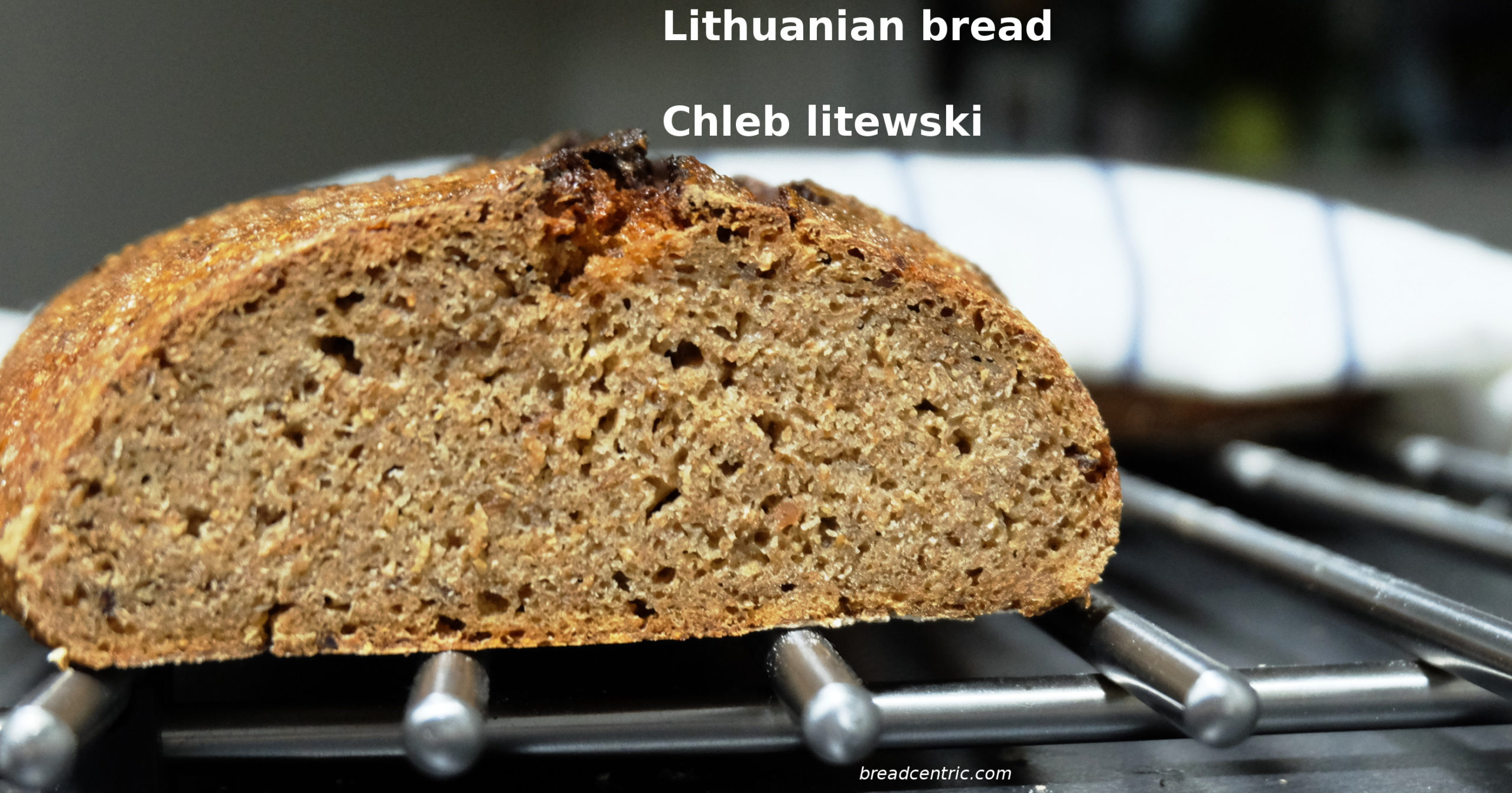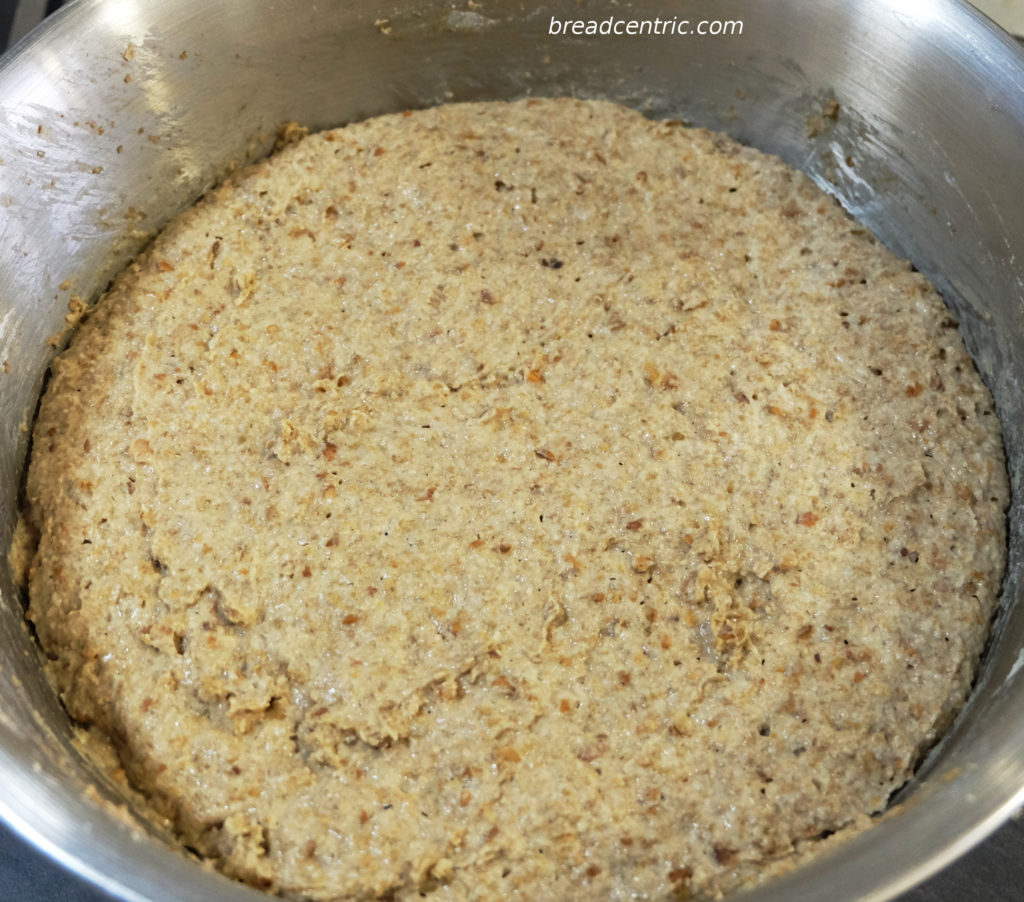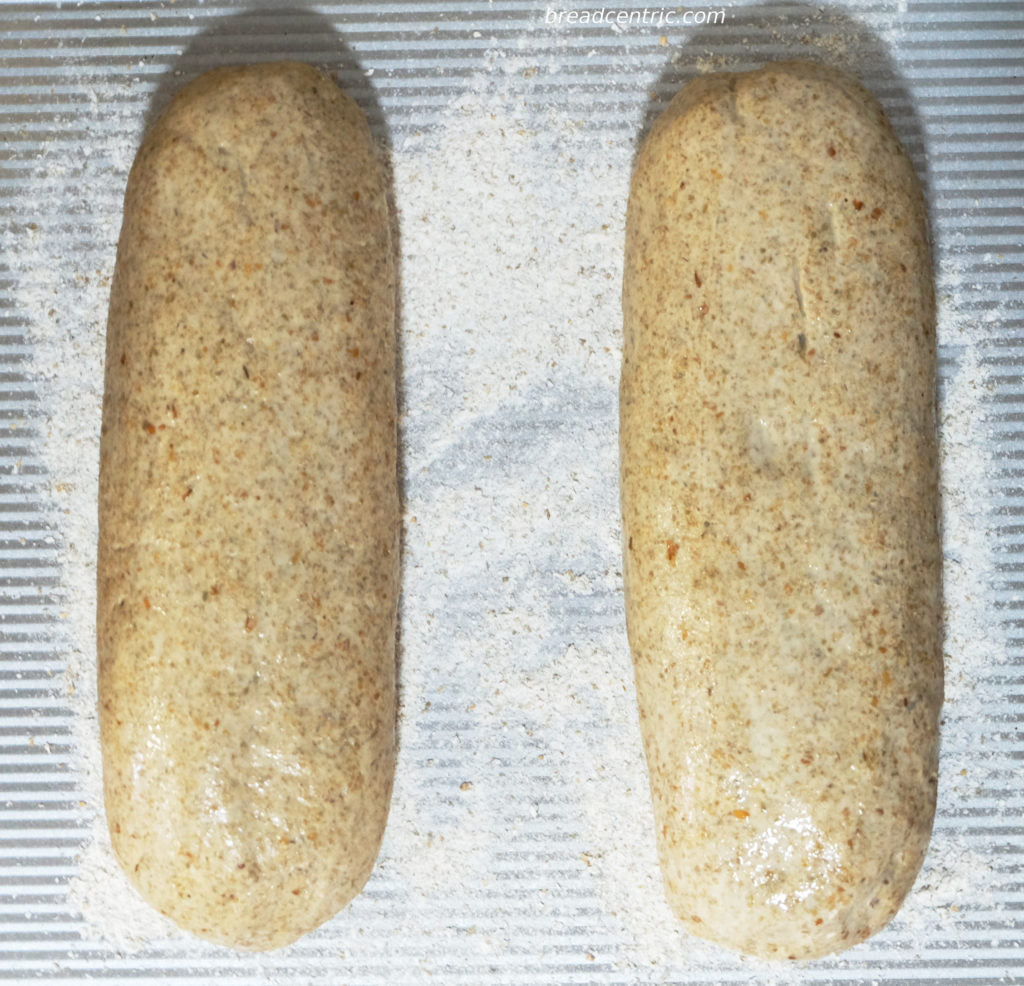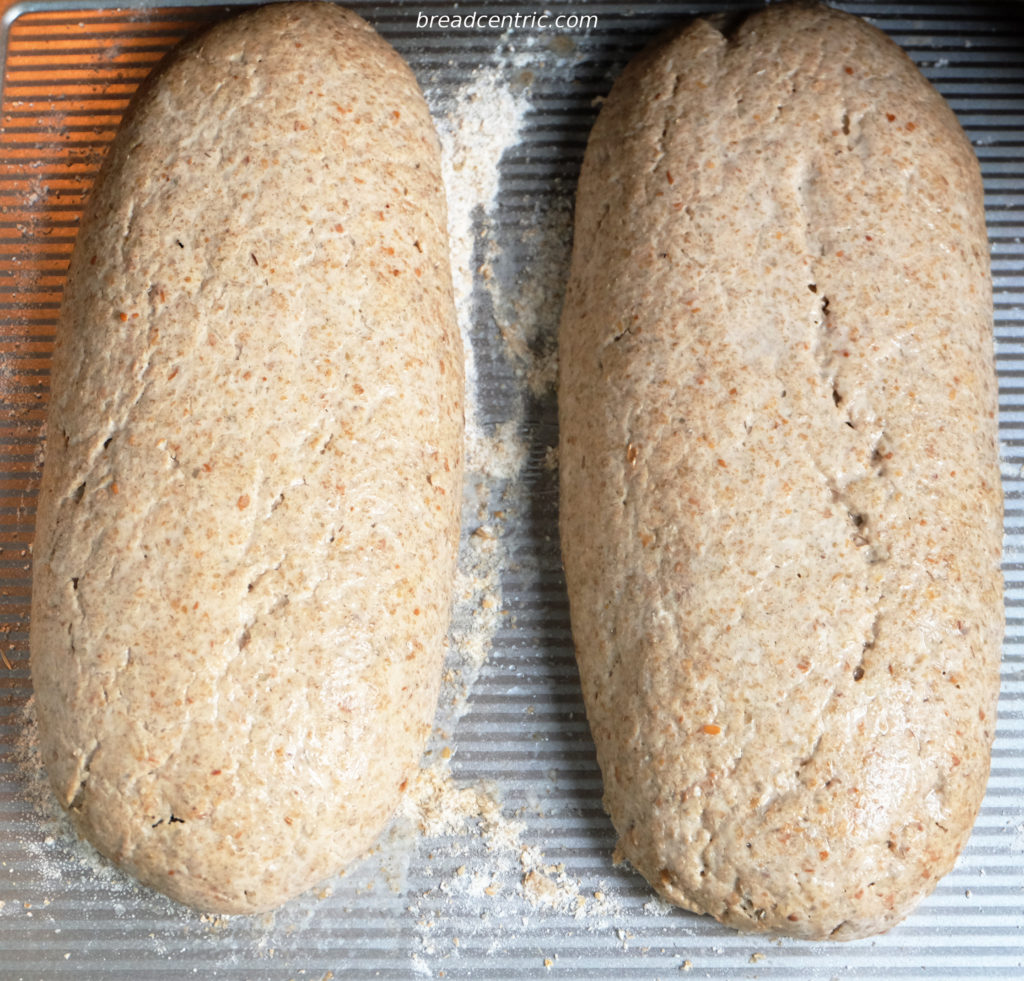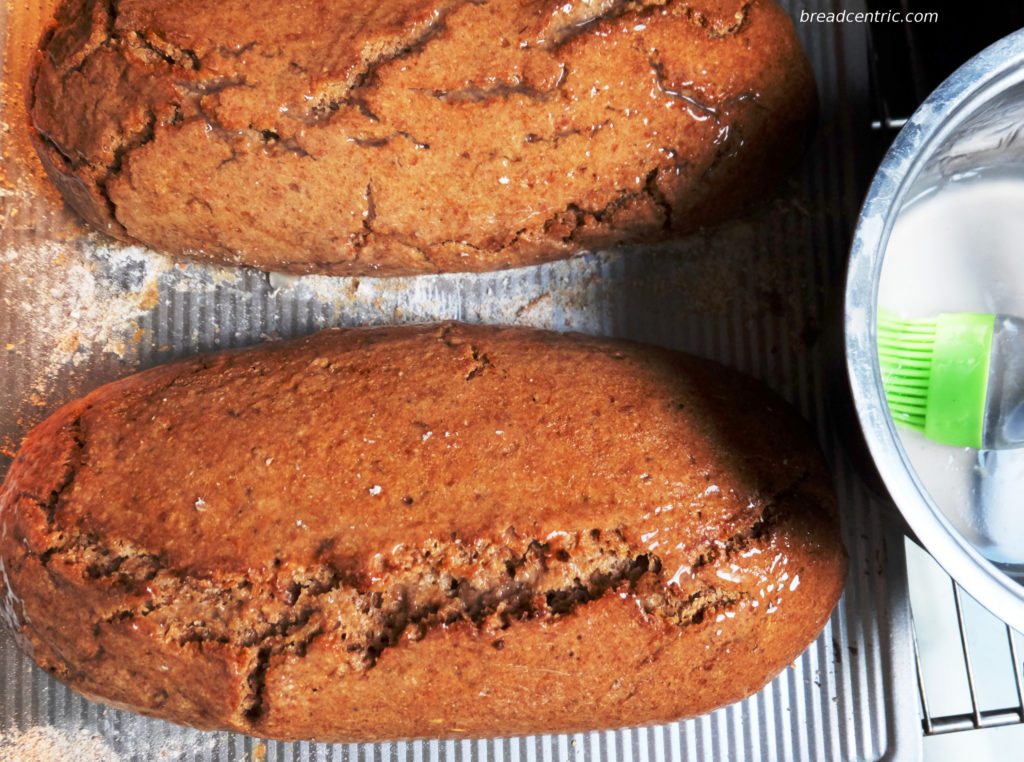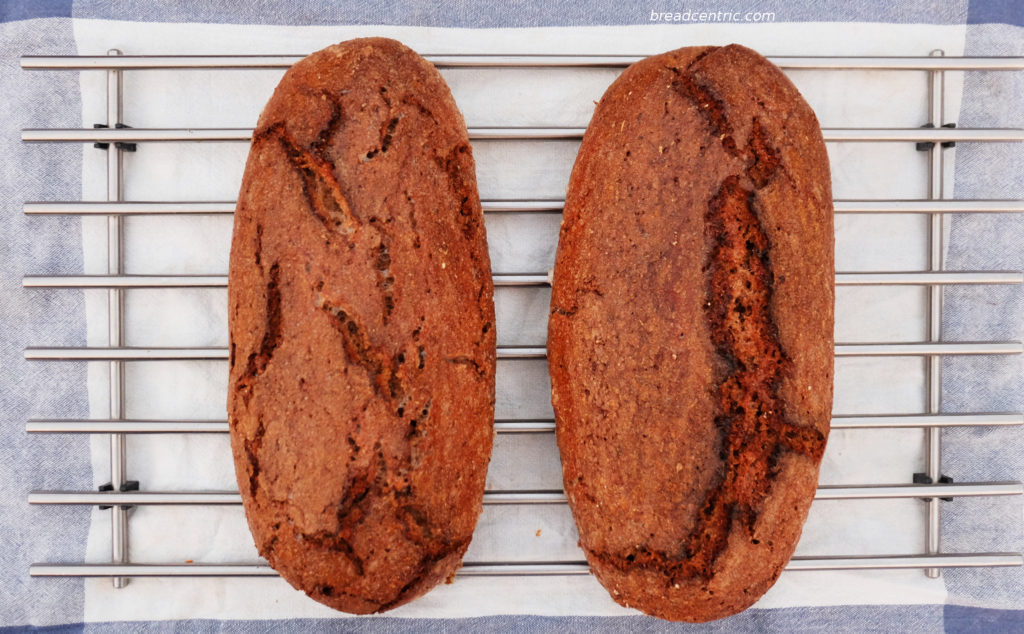Just east of Poland is a number of countries where bread is a totally different experience than the one in Poland. I chose Lithuanian bread as the first to try and make.
Na wschód od Polski znajduje się kilka państw, gdzie chleb to całkiem inne doświadczenie niż ten w Polsce. Wybrałem chleb litewski jako pierwszy do spróbowania.
Recipe comes from The Rye Baker blog. The author, Stanley Ginsberg, has published a book: “The Rye Baker: Classic Breads from Europe and America” (ISBN: 978-0393245219) and taken his bakes into account I can recommend it with no hesitation. It’s on my list of things to buy. I will not pretend that I write the recipes better than him. I’m mainly rewriting it here for my records and to share the experience. The link to his recipe post is at the top of this paragraph.
It’s a second recipe of Lithuanian bread I tried. The first one was tasty, but not really Lithuanian, as my friend from Latvia commented. He called this one proper.
The author uses Red rye malt, I’m using malt that I managed to get. Other than that, I used buckwheat honey (hurray for a beekeeper Father in law). I recommended not using it for waffles because of the strong aroma, I recommend using it in this bread for the very same reasons. And add a couple caraway seeds. It will be taken to a completely new level.
Planning
You need to prepare the starter and scald (soaker) in advance, then after 12 hours mix them into Opara and wait further 12 hours, then mix the dough, wait 2-3 more hours and bake for about 40-50 minutes. Then wait a minimum of 24 hours before slicing. Yes, seriously.
Ingredients
Starter
- 70 g whole rye flour
- 70 g warm water
- 10 g rye sourdough
Soaker
- 35 g rye malt
- 200 g hot water (75-80 C)
Opara
- 150 g whole rye flour
- 150 g starter
- 235 g soaker
Final dough
- 535 g opara
- 230 g whole rye flour
- 50 g wheat strong white flour
- 100 g warm water
- 10 g salt
- 25 g sugar
- 21 g honey (I recommend buckwheat)
- 1 teaspoon caraway seeds (it will be about 2-3 g, an amount your scale may simply ignore)
You’ll also need some potato starch (1 teaspoon) and water (225 g) for glazing.
Preparation
- Mix starter, cover the bowl and leave aside
- Mix the soaker, cover the bowl and leave aside. Wait for about twelve hours
- Mix the two together with flour to form opara. Wait for about twelve hours
- Mix all the final dough ingredients well. It will look more like a paste then a dough
- Shape it into a long shape with wet hands and leave it aside for 2-3 hours
- Set the oven to 175 C with the baking surface inside
- It may crack a little (smoothen the surface again using wet hands)
- Put the loaf on the baking surface and set the oven to 230 C for 15 minutes. Then reduce the temperature to 200 C and bake for 25 minutes
- While the bread is baking, prepare the glaze using the potato starch and water: put them in a sauce pan and simmer until it turns thick
- After the baking time has elapsed, glaze the loaf and bake for 10 more minutes (I did this twice, for some more crunch)
- Let it cool down on the cooling rack, wrap in a tea towel and leave for 24-48 hours
It’s an interesting loaf. While mainly rye, it’s dominant taste is sweet. The color is dark, the crumb is dense. Matches meats really well. The caraway gives a very pleasant aroma. Crunchy crust is also enjoyable, and the look’s, well, prefect.
Just a warning – it’s very dense and firm, it takes a good knife to slice it.
I think I could have given it more time to rise before baking, so that it wouldn’t expand as much in the oven.
Next to try from this guy is Borodinsky, probably after I get the book.
Przepis pochodzi z bloga The Rye Baker. Autor, Stanley Ginsberg, opublikował niedawno książkę: “The Rye Baker: Classic Breads from Europe and America” (ISBN: 978-0393245219, tylko po angielsku) i biorąc pod uwagę to, co piecze, mogę ją polecić bez wahania. Jest ona na mojej liście zakupów. Nie będę sugerował, że potrafię opisać przepis lepiej niż on. Głównie przepisuję go tu dla moich zapisków z minimalnymi zmianami i żeby podzielić się doświadczeniem Jeśli znasz angielski, link jest na początku tego akapitu.
To drugi przepis na chleb litewski, którego spróbowałem. Pierwszy był smaczny, ale kolega z Łotwy stwierdził, że nie do końca litewski. Ten tutaj został nazwany porządnym.
Autor używa słodu z czerwonego żyta, a ja używam takiego, jaki zdołałem nabyć. Poza tym użyłem miodu gryczanego (niech żyje Teść-pszczelarz). O ile nie polecałem go do gofrów ze względu na silny aromat, w tym chlebie polecam go właśnie z tego względu. I dodaj troszkę ziaren kminku. To wyniesie wypiek na kolejny poziom.
Planowanie
Musisz przygotować zaczyn i maczankę 12 godzin przed tworzeniem opary. Po jej zmieszaniu czekasz 12 godzin na zrobienie ciasta. Potem jeszcze 2-3 godziny wyrastania, 40-50 minut pieczenia. I minimum 24 godziny przed pokrojeniem. Serio.
Składniki
Zaczyn
- 70 g pełnoziarnistej mąki żytniej
- 70 g ciepłej wody
- 10 g żytniego zakwasu
Maczanka
- 35 g pełnoziarnistej mąki żytniej
- 200 g gorącej wody (75-80 stopni)
Opara
- 150 g pełnoziarnistej mąki żytniej
- 150 g zaczynu
- 235 g maczanki
Końcowe ciast
- 535 g opary
- 230 g pełnoziarnistej mąki żytniej
- 50 g białej chlebowej mąki pszennej
- 100 g ciepłej wody
- 10 g soli
- 25 g cukru
- 21 g miodu (polecam gryczany)
- 1 łyżeczka kminku (to będzie 2-3 g, ilość, którą Twoja waga może zwyczajnie zignorować)
Będziesz też potrzebować skrobi ziemniaczaej (1 łyżeczka) i wody (225 g) na glazurę.
Przygotowanie
- Zmieszaj zaczyn, przykryj miskę i odłóż na bok
- Zmieszaj maczankę, przykryj miskę i odłóż na bok. Poczekaj około 12 godzin
- Zmieszaj zaczyn z maczanką i mąką, aby zrobić oparę. Poczekaj około 12 godzin
- Zmieszaj wszystkie składniki w ciasto. Będzie bardziej przypominać pastę niż ciasto
- Uformuj mokrymi dłońmi długie bochenki i odłóż na 2-3 godziny
- Nastaw piekarnik na 175 stopni. Powierzchnia na której będziesz piec, powinna być w piekarniku
- Wyrośnięte bochenki mogą trochę popękać (ponownie wygładź mokrymi dłońmi)
- Połóż bochenek na powierzchni do pieczenia i nastaw piekarnik na 230 stopni na 15 minut. Potem zredukuj do 200 stopni i piecz przez 25 minut
- Podczas pieczenia, przygotuj glazurę ze skrobi ziemniaczanej i wody: włóż je do garnka i gotuj aż zgęstnieją
- Gdy minie podany czas pieczenia, pokryj chleb glazurą i piecz jeszcze 10 minut (robiłem to dwukrotnie, dla bardziej chrupiącej skórki)
- Połóż chleb na kratce do ostygnięcia. Następnie obwiń w ściereczkę i pozostaw w ten sposób na 24-48 godzin
To interesujący chleb. Mimo że głównie żytni, dominujący smak jest słodki. Kolor jest ciemny, a miękisz gęsty. Pasuje do wędlin. Kminek nadaje mu bardzo przyjemny aromat. Chrupiąca skórka jest również przyjemna, a wygląd doskonały.
Tylko ostrzeżenie – chleb jest serio bardzo gęsty i sztywny. Dobry nóż sobie z nim poradzi.
Myślę że mogłem mu pozwolić wyrastać nieco dłużej, żeby się tak nie rozrósł w piekarniku.
Następny wschodnioeuropejski chleb do spróbowania to Borodinsky, pewnie gdy już kupię książkę.
